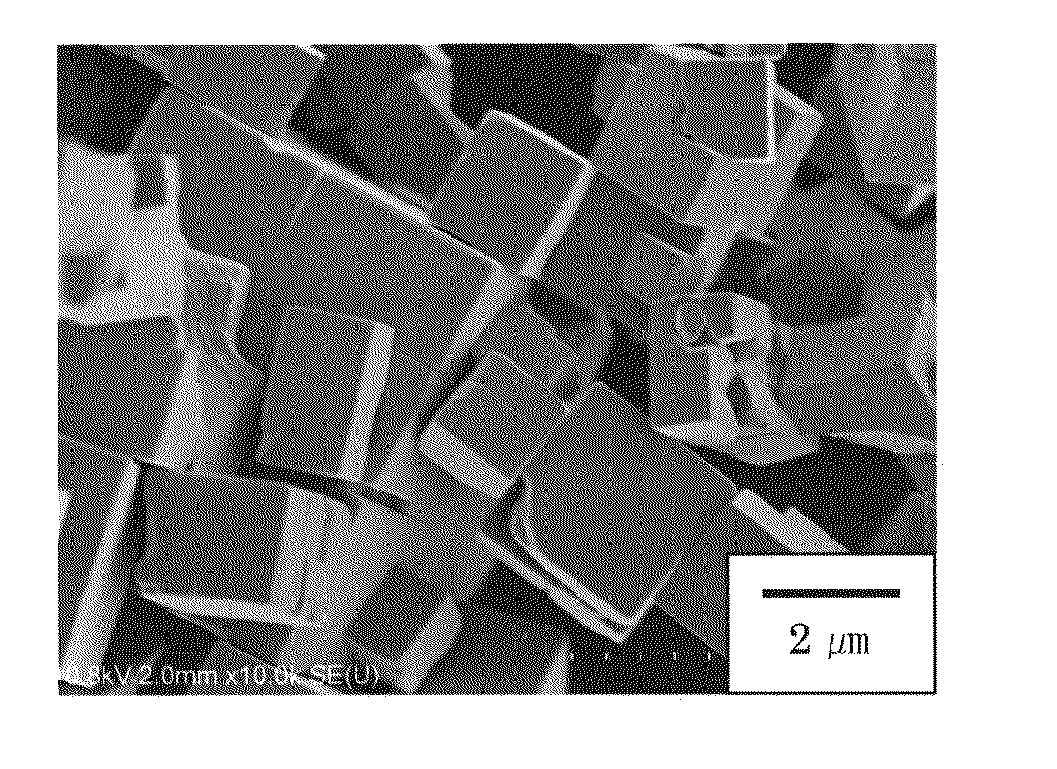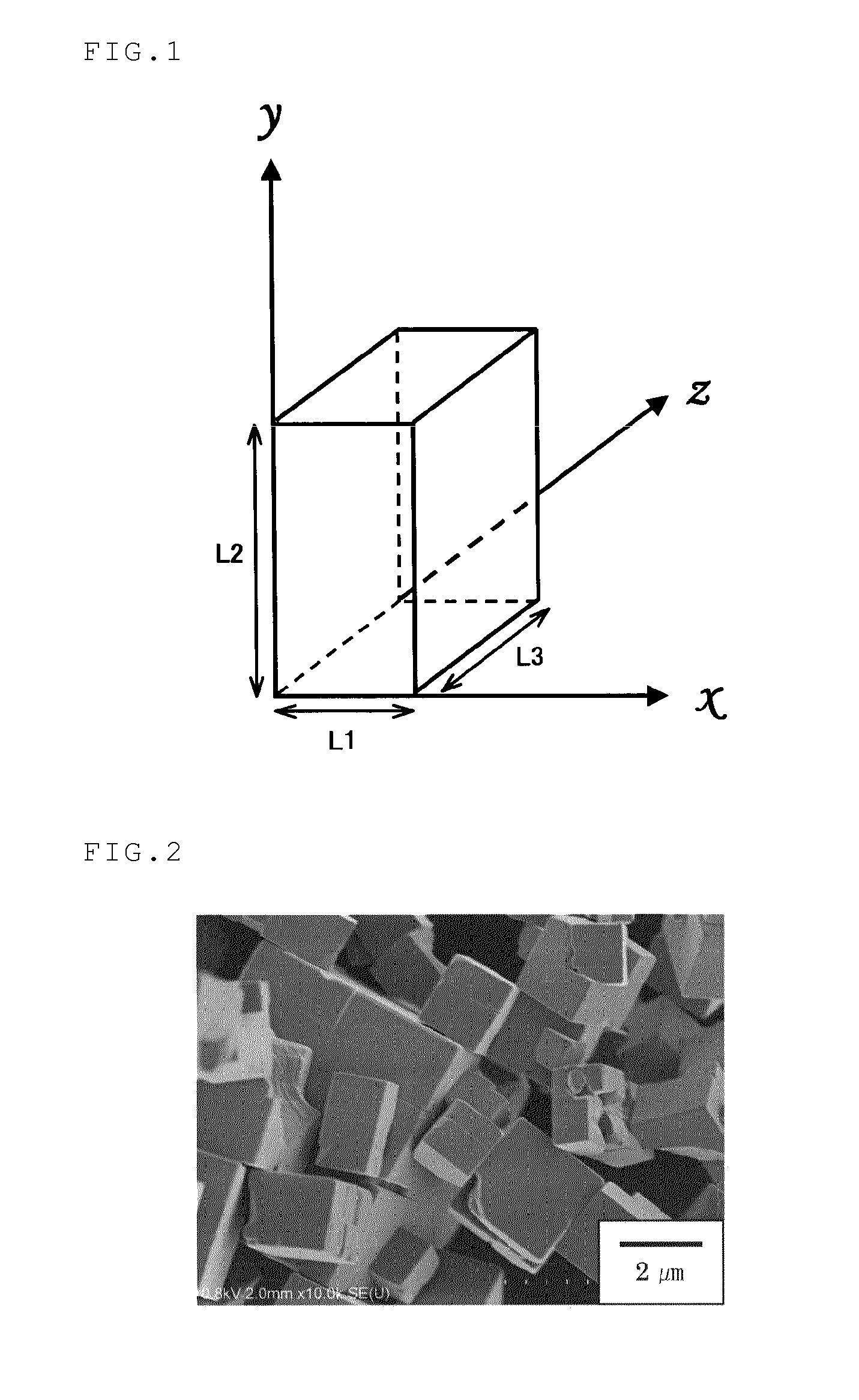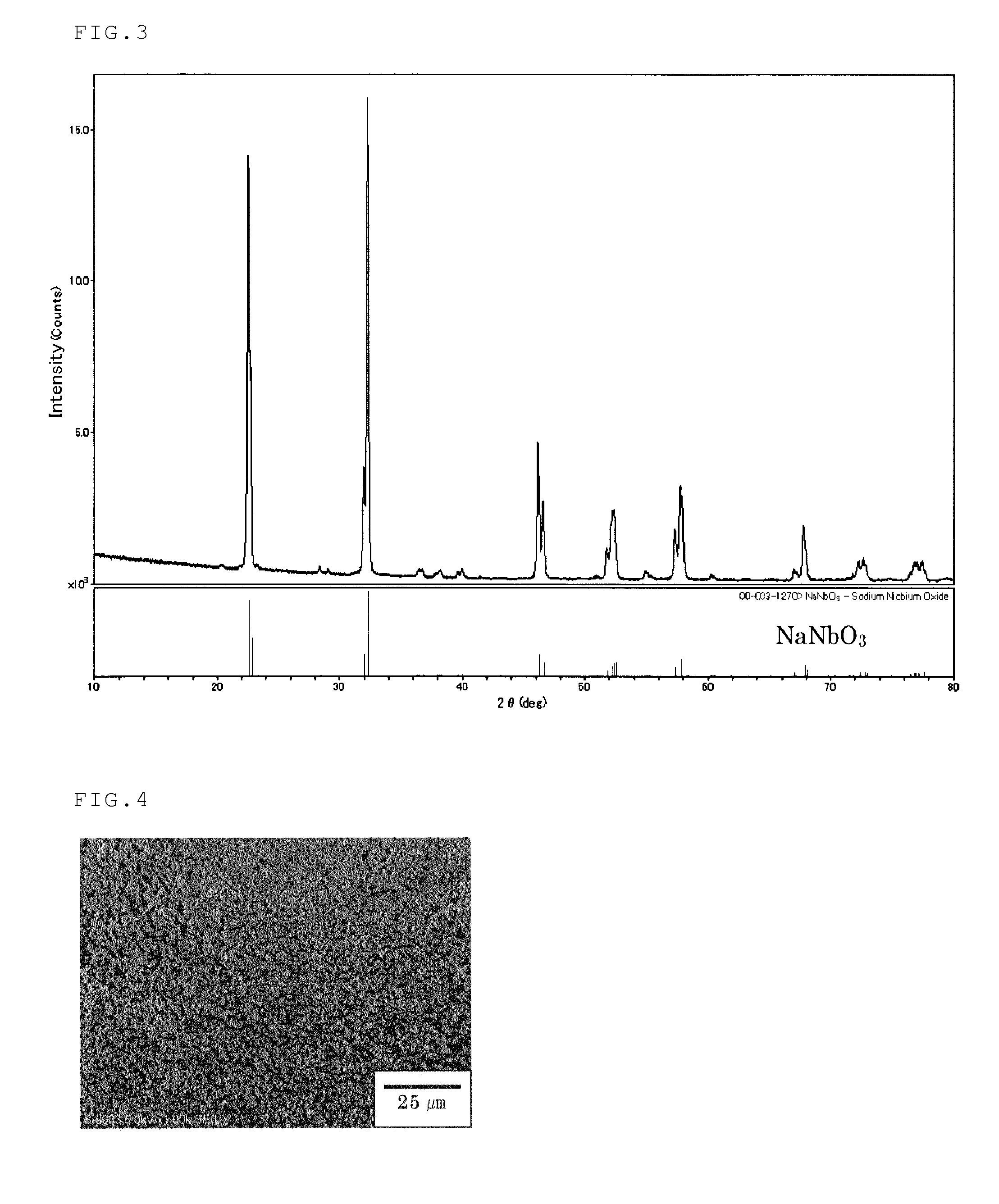Method for producing alkali metal niobate particles, and alkali metal niobate particles
a technology of alkali metal niobate and alkali metal niobate, which is applied in the direction of natural mineral layered products, niobium compounds, synthetic resin layered products, etc., can solve the problems of environmental pollution caused by lead oxide spillage on disposal, and achieve excellent piezoelectric properties, easy densification of ceramic materials, and good control of size and shap
- Summary
- Abstract
- Description
- Claims
- Application Information
AI Technical Summary
Benefits of technology
Problems solved by technology
Method used
Image
Examples
example 1
(Synthesis 1 of Substantially Cubic NaNbO3 Particles)
[0111]A portion of 27.02 g (=100 mmol) of niobium chloride was completely dissolved in 150 mL of a 0.10-M aqueous HCl solution. The solution was transferred into a 200-mL volumetric flask, and a 0.10-M aqueous HCl solution was further added to the flask for adjusting the total volume of the solution to be 200 mL. A 0.50-M aqueous NbCl5 solution in 0.10 M HCl was thus prepared. Then, 6.0 mL of the 0.50-M aqueous NbCl5 solution in 0.10 M HCl was slowly added to 6.0 mL of a 12.0-M aqueous NaOH solution in a 30-mL Teflon(™) vessel at room temperature under stirring. The resulting white suspension was allowed to still stand with heating at 100° C. in the Teflon(™) vessel for 24 hours. Then, the content was transferred to an autoclave whose inner chamber wall was made of Teflon(™), and allowed to stand for 3 hours with heating at 250° C. The solid matter was separated from the resulting suspension by centrifugation, and then the solid w...
example 2
(Synthesis 1 of Substantially Cubic KNbO3 Particles)
[0112]Synthesis of substantially cubic KNbO3 particles was performed in the same manner as in Example 1, except that an 18.0-M aqueous KOH solution was used in place of the 12.0-M aqueous NaOH solution. FIGS. 4 and 5 show the SEM images of the obtained KNbO3 particles. As shown in the SEM images, cubic particles having sides of about 1 μm was obtained. Also, XRD analysis of the cubic particle was carried out, and the analysis found that particles consisted of single phase KNbO3. Alternatively, when the temperature during the second heating step (step (C)) was set to 150° C., cubic KNbO3 particles with a narrow particle size distribution of about 0.2 μm, as shown in FIG. 6, were obtained, although product yield was slightly lowered.
example 3
(Synthesis 2 of Substantially Cubic NaNbO3 Particles)
[0113]A portion of 6.0 mL of an 8.0-M aqueous NaOH solution was added to 0.40 g (=3.0 mmol) of niobium pentoxide in a 30-mL Teflon(™) vessel. Ion-exchange water was further added to the vessel under stirring to adjust the total volume of the mixture to 12 mL. Then, the Teflon(™) vessel was sealed and allowed to still stand with heating at 100° C. for 24 hours . Then, the content was transferred to an autoclave whose inner chamber wall was made of Teflon(™), and allowed to stand for 3 hours with heating at 250° C. The solid matter was separated from the resulting suspension by centrifugation, and then the solid was dispersed in water under ultrasonic dispersing. The solid matter was separated again by centrifugation and dried to separate NaNbO3 particles. Evaluation of the obtained particles was performed in the same manner as that described in Example 1. By adjusting the initial concentration of NaOH to 5 to 18 mol / L, the size of ...
PUM
| Property | Measurement | Unit |
|---|---|---|
| length | aaaaa | aaaaa |
| length | aaaaa | aaaaa |
| shape | aaaaa | aaaaa |
Abstract
Description
Claims
Application Information
 Login to View More
Login to View More - R&D
- Intellectual Property
- Life Sciences
- Materials
- Tech Scout
- Unparalleled Data Quality
- Higher Quality Content
- 60% Fewer Hallucinations
Browse by: Latest US Patents, China's latest patents, Technical Efficacy Thesaurus, Application Domain, Technology Topic, Popular Technical Reports.
© 2025 PatSnap. All rights reserved.Legal|Privacy policy|Modern Slavery Act Transparency Statement|Sitemap|About US| Contact US: help@patsnap.com



